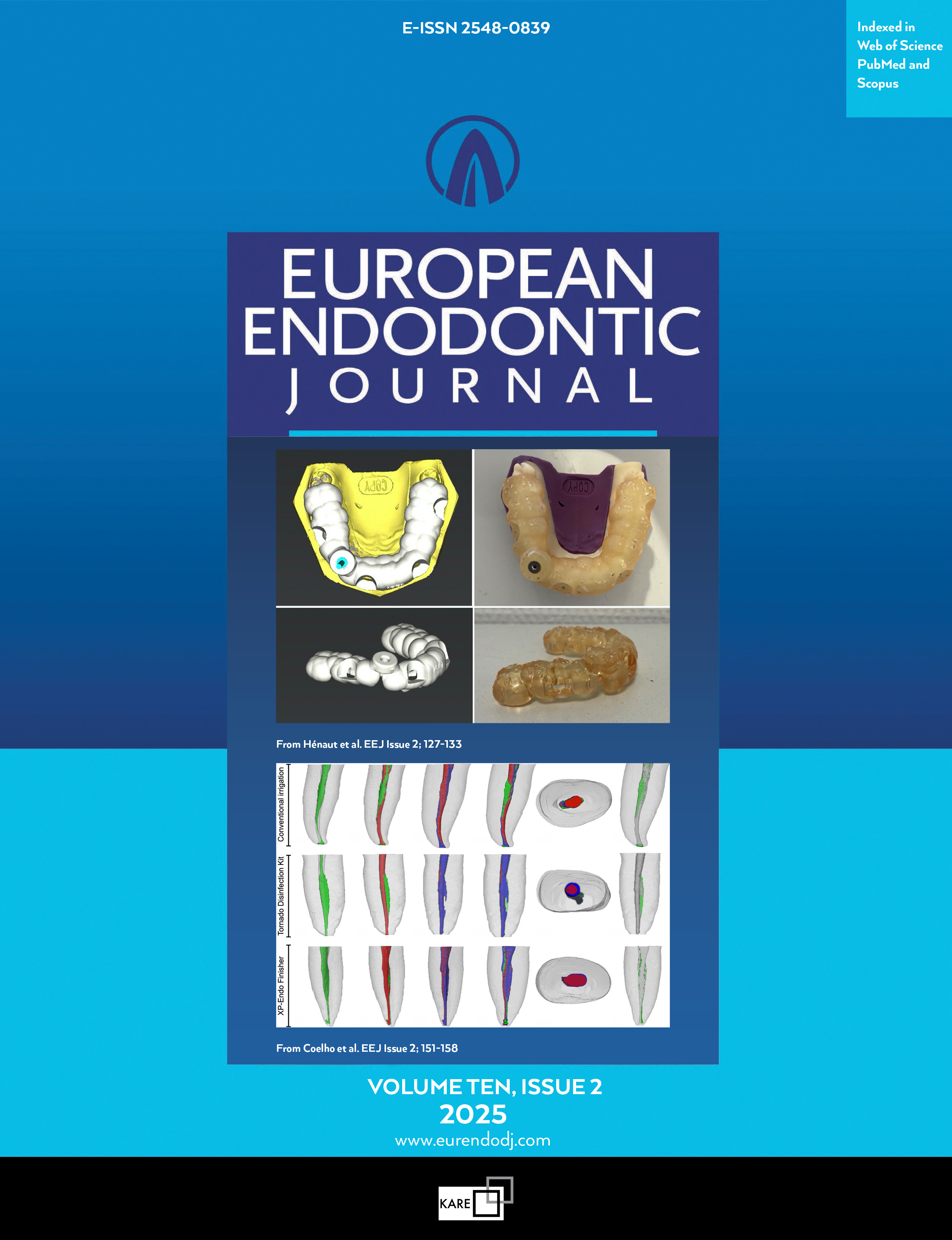Metrics
2023 IMPACT FACTOR
5 year Impact Factor
Eigenfactor
2023 CiteScore
Journal Citation Reports (Clarivate, 2024)(Dentistry, Oral Surgery & Medicine (Science))
Tactile Method for Orthograde Exploration of the Apical Foramen in Non-vital Permanent Teeth with Open Apices: Case Series
Marlen Arroyo Tovar, Hugo Plascencia, Mariana Díaz, Andres Olvera Bravo, Mario Uribe, Gerardo Gascon, Rodrigo SolisEndodontic Postgraduate Program, University of Guadalajara, University Center of Health Sciences (CUCS), Guadalajara, MexicoThis research assessed the interobserver agreement and precision of the tactile method (TM) during orthograde exploration of the apical terminal portion of permanent teeth with necrotic pulps and open apices. Nine non-vital teeth with incomplete root development from nine patients were included. Two observers analyzed preoperative cone beam computed tomography (CBCT) images to determine the distance between the incisal reference point and the apical terminal portion at four apical measurement points: buccal, lingual, distal, and mesial. The shortest of these points was considered the tomographic working length (TWL) and was used as control group. Subsequently, endodontic access and light chemo-mechanical brushing of the main canals were performed, followed by radiographic working length (RWL) establishment. Two different operators applied the TM using a #25 manual K-file (Dentsply Maillefer, Ballaigues, Switzerland) pre-curved in the tip at a 90° angle. The same four apical measurement points were explored, and the tactile method working length (TMWL) was determined. Interobserver agreement was assessed using Bland-Altman method. Wilcoxon signed-rank test and Students t-test were used to analyze the correlation between methods (p≤0.05). The measurements conducted for TM and TWL showed a high level of agreement (0.486 and -0.144 mm, respectively). Compared with the control group (TWL) and TMWL, the RWL showed no significant correlation (<0.001 and 0.0068, respectively). TM demonstrated a reliable level of inter-observer agreement and could prove valuable when treating permanent teeth exhibiting non-vital pulps and open apices, especially in cases with radiographic evidence of external inflammatory apical resorption. (EEJ-2024-11-187)
Keywords: Interobserver agreement, open apices, reliability, tactile method, working length determinationManuscript Language: English
(3 downloaded)


